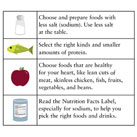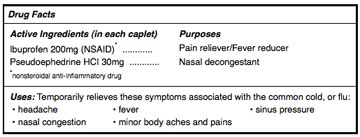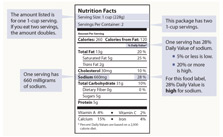
U.S. DEPARTMENT OF HEALTH AND HUMAN SERVICES
By the end of each session, participants will be able to:
Tell participants that you are going to make a statement for which you want to learn their reaction. Give each participant small cards on which you've written the following: SA (means Strongly agree); A (Agree); D (Disagree); SD (Strongly disagree). State the following and ask participants to hold up the card that shows his/her answer: “There are steps you can take to keep your kidney working”. As an assessment strategy: Repeat at the end of the lesson to see if their responses have changed.
These images are available free of charge to download and include in your patient education materials.
 |
 |
|
| A chart that lists diet tips to help slow down CKD Download (.jpg/72 K) |
Sample Drugs Facts label with NSAIDs Download (.jpg/82 K) |
|
 |
||
| Sample Nutrition Facts label which explains serving sizes and sodium content Download (.jpg/89 K) |
||
PDF files require Adobe Acrobat
Page last updated: March 1, 2012